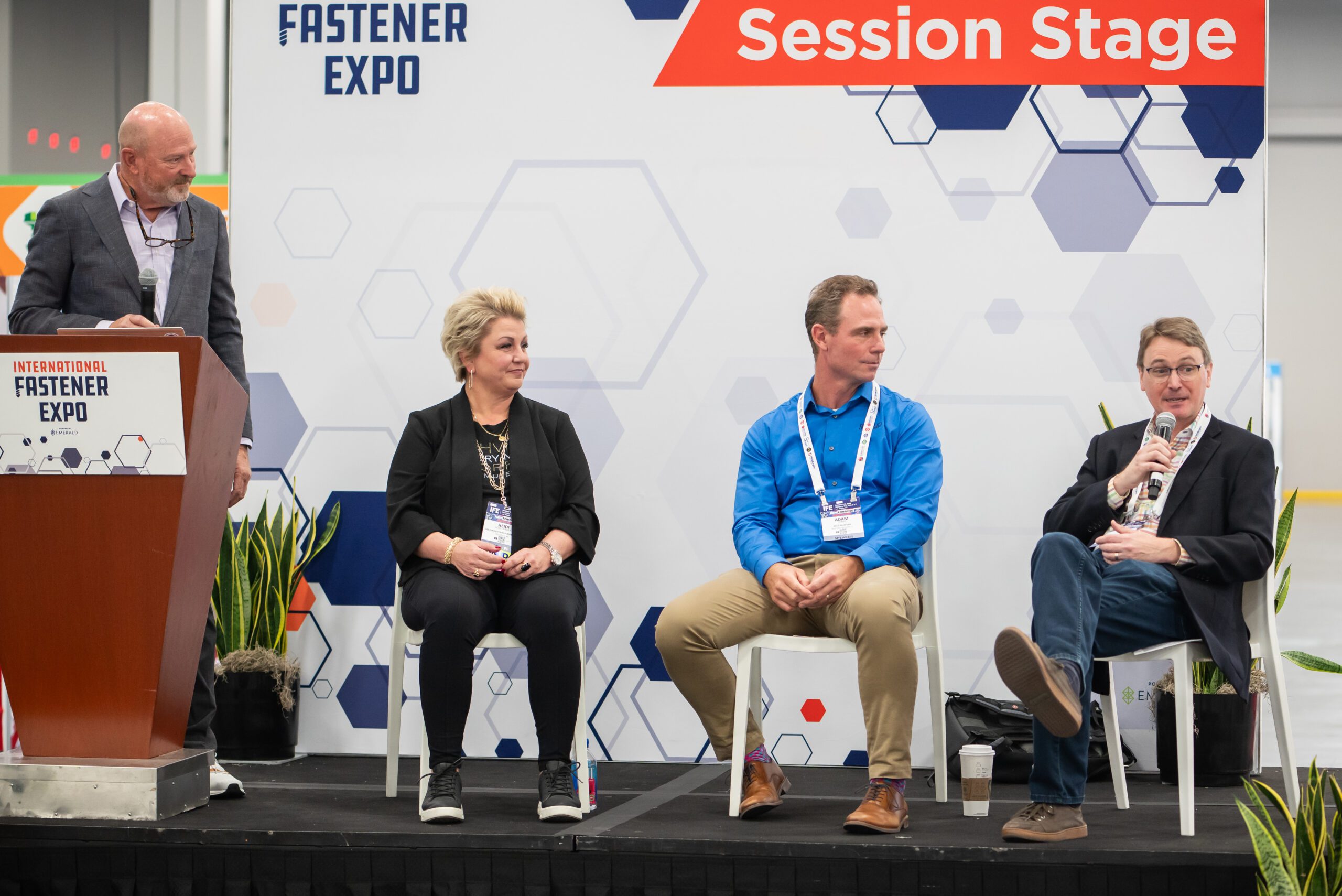As seasoned professionals retire and the demand for innovation grows, companies in the fastener industry must strategically plan for leadership transitions to ensure continuity, competitiveness, and sustainable growth.
While succession can be put simply as the transferring of ownership and management of a company; succession planning is a much more strategic and deliberate systemic process aimed at identifying future leaders and developing them to ensure a smooth transition of key leadership roles within the company. Succession planning focuses on long term success through key considerations that start with the understanding of roles and the goals of the current business leaders and owners. From there the company can look to build for the future by identifying critical roles, assessing talent, development and training plans, and performance management.
Gary Cravens, President of Advance Components, moderated a session at IFE 2023 that focused on succession planning. Joined by an industry leading panel including Heidi Volltrauer, COO of Volt Plastics, Jon Queenin, COO of Specialty Bolt and Screw, and Adam Derry, President of Field Fasteners, who all shared their personal experiences and lessons in succession planning.
Adam Derry shared the structured plan in place at Field Fasteners that looks at specific employee’s retirement dates, successor assignments, mentorship, and exposure and visibility for both the current leaders and those who are “on deck.” Here are some more best practices to guide you in succession planning within your fastener business:
Identifying High-Potential Talent: Begin by identifying individuals with a combination of technical expertise, leadership qualities, and a commitment to continuous learning. Invest in professional development programs to nurture these high-potential employees.
Cross-Training and Skill Development: Cross-train employees in various aspects of the business, including technical, managerial, and interpersonal skills. This approach ensures a well-rounded skill set in potential successors.
Mentorship Programs: Establish mentorship programs that pair experienced leaders with emerging talent. This fosters knowledge transfer and provides successors with valuable insights into the nuances of the fastener industry.
Performance Metrics and Feedback: Implement clear performance metrics and regular feedback mechanisms to assess potential successors’ progress. This data-driven approach enables organizations to make informed decisions and adjustments to the succession plan as needed.
Contingency Planning: Develop contingency plans to address unexpected leadership gaps. Having a pool of qualified individuals who can step into key roles at short notice mitigates the risks associated with sudden changes in leadership.
The fastener industry adds another complexity to succession planning as many businesses are family owned. Nearly two-thirds of family businesses are without a documented and communicated succession plan according to a 2023 PwC’s US Family Business Survey. Panelists shared that daily communication and annual discussions helped to evaluate long term goals and alignment with family members, as well as maintain trust and support.
Effective succession planning is a strategic imperative. By identifying and nurturing the next generation of leaders, companies can ensure a seamless transition, uphold quality standards, and continue to thrive in a competitive market. The key lies in a proactive, well-thought-out approach that aligns with the unique challenges and demands of the fastener industry. Succession planning is not just about replacing leaders; it’s about securing the future of the entire organization.
This entire panel session, along with all the 2023 and 2022 Session Stage presentations, can be found on IFE Replay. Revisit these excellent learning opportunities and save the date for IFE 2024, September 9-11 in Las Vegas!









